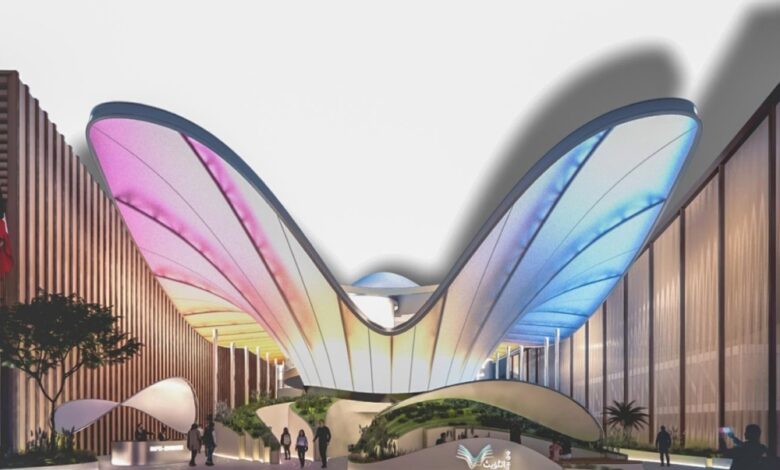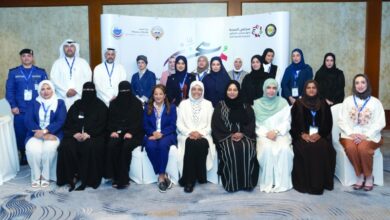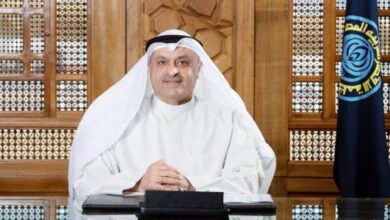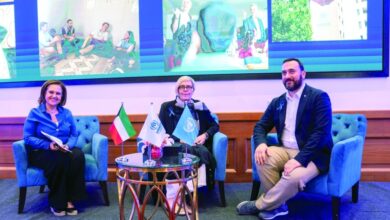Kuwait returns to Osaka World Expo after 55 years
Titled “Vision of the Future,” Kuwait’s pavilion draws inspiration from pearls—a powerful symbol of the country’s maritime heritage and economic history, now reimagined as part of its forward-looking narrative.

• Kuwait’s participation in Expo 2025 will highlight its message of peace, partnership, and openness, marking a return to Osaka for the first time since its debut at the 1970 World Expo.
Kuwait is set to return to Osaka, Japan, 55 years after its first participation in the World Expo. The event will open on April 13 on the islands of Yumeshima and Osaka, reported Arabic daily Al Jarida.
Titled “Vision of the Future,” Kuwait’s pavilion draws inspiration from pearls—a powerful symbol of the country’s maritime heritage and economic history, now reimagined as part of its forward-looking narrative.
A sustainable and inclusive future
Kuwait’s message at the expo will highlight peace, partnership, and openness, reflecting its role as a unifying force in shaping a sustainable and inclusive future. The theme, “Empowering and Sustaining Life,” echoes this commitment.
This special event explores Kuwait’s participation, the origins of the World Expo, and the international competition to host what has become the world’s largest showcase for innovation and cultural exchange. “We Were Here” is a fitting slogan for the 2025 edition, marking Kuwait’s return to the city where it first appeared in the 1970 Osaka Expo.
Sixty five million visitors
Kuwait was among the participating nations at the 1970 World Expo held in Osaka, Japan—the first of its kind in the country. Running for 183 days, from March 15 to September 13, the Expo welcomed over 65 million visitors under the theme “Progress and Harmony for Humanity.” Kuwait’s pavilion stood out with its modern Islamic architectural design, symbolizing the country’s maritime heritage and its geographic and cultural ties to Japan. The project was supervised by Engineer Al-Faza from the Ministry of Commerce and Industry’s Exhibitions Department, who served as the State Commissioner General.
The two-story Kuwaiti pavilion was topped with a golden dome resembling that of an Islamic mosque, and its exterior was clad in ceramic tiles, signifying Kuwait’s march towards modernity. The ground floor showcased films about Kuwait’s history, while a central water feature displayed a sailing boom ship—a powerful symbol of the nation’s maritime trade legacy.
Artifacts from Failaka Island, dating back to 1500 BC and the era of Alexander the Great, were also exhibited. The late Minister of Finance and Oil, Abdulrahman Al-Ateeqi, visited the site during construction, and the Expo itself was attended by prominent Kuwaiti officials, including Sheikh Abdullah Al-Jaber Al-Sabah.
The world-renowned Asahi newspaper released a special supplement featuring the Kuwaiti and Japanese pavilions, including speeches from both countries’ ministers of trade and industry.
The Expo 2025 will be held from April 13 to October 13 under the theme “Designing Future Society for Our Lives.” This marks Japan’s third time hosting the expo, a global platform organized by the Paris-based Bureau International des Expositions, bringing nations together every five years to collaborate on innovation, sustainability, and global progress.
From maritime trade to modern diplomacy
Kuwait participated in the 1970 World Expo in Osaka, inaugurated by Emperor Hirohito on March 14 with a speech celebrating global cooperation.
Diplomatic and economic relations between Kuwait and Japan have deep roots, dating back to the late 19th century. Trade began in 1875, with Japanese goods reaching Kuwait via Bombay and Aden. In 1880, Japan’s Masaharu Yoshida mission—sent by the Meiji government—visited the Arabian Gulf, including Kuwait, to explore commercial opportunities. By 1934, the Yamashita Kisen shipping company had established regular routes between Japan and the Gulf.
A turning point came in 1958 when Sheikh Abdullah Al-Salem Al-Sabah granted Japan’s Arabian Oil Company (AOC) exploration rights in Kuwait’s Neutral Zone. In 1960, the AOC discovered the Khafji oil field, and by 1961, the first shipment of crude oil was exported—cementing energy cooperation between the two nations.
Diplomatic relations between Kuwait and Japan
Diplomatic relations were formally established on December 8, 1961, when Japan recognized Kuwait’s independence. In 1962, Kuwait appointed Suleiman Al-Sanea as its first ambassador to Tokyo, and by 1963, the Japanese embassy opened in Kuwait. The Kuwaiti embassy in Tokyo, designed by renowned architect Kenzo Tange, was completed in 1970 and stands as a symbol of cultural and diplomatic ties.
Cultural cooperation expanded through Japan’s scholarship programs aimed at fostering mutual understanding. One notable recipient was Nizar Mulla Hussain, Kuwait’s first marine biologist, who studied shrimp farming in Japan in 1970.
Kuwait’s pavilion, titled “Vision of the Future,” will again spotlight its heritage and commitment to global cooperation—echoing its expo legacy and ongoing partnership with Japan.
Expo’s 174-year journey: From London’s Hyde Park to Osaka
From the inaugural Expo in London’s Hyde Park in 1851 to the upcoming 2025 edition in Yumeshima, Osaka, international competition to host World Expos has intensified. Over the decades, these global events have been held in numerous cities and capitals around the world, culminating in Dubai’s landmark Expo in 2020—marking the first-ever World Expo hosted by an Arab country. Saudi Arabia will follow suit by hosting Expo 2030 in Riyadh.
Over its 174-year history, the World Expo has evolved into the world’s largest platform for showcasing transformative innovations that have shaped modern society. Often referred to as the “mother of all international exhibitions,” the Expo attracts intense global competition due to the unique opportunities it offers for economic, cultural, and technological collaboration.














